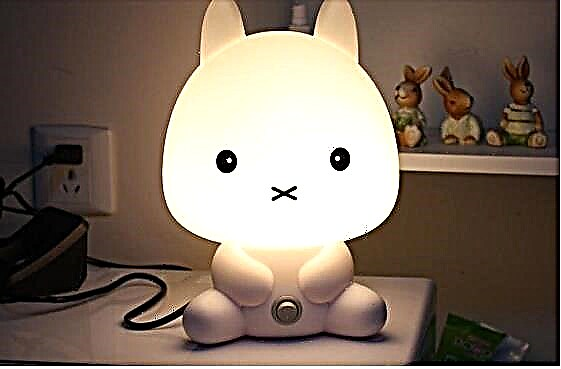When the skin on the toes of the child peels off, you need to find out the reason in order to immediately begin treatment. Such problems are not always associated with dangerous diseases. However, it is imperative to exclude them; a doctor will help to do this.

Fingers
Why can the skin on the legs peel off
There are several factors that provoke the fact that the skin on the feet and toes of the child will peel. To prevent complications, you must immediately contact a dermatologist and pediatrician.
Fungal disease
Fungus can settle on the skin of the feet if the child is, for example, in the pool. When visiting public places, you should not forget about the rules of hygiene, you should not use someone else's shoes, towels.
It is better to always have flip-flops or slates with you. Fungal disease is accompanied by itching, so it will be difficult not to notice its development. If the child does not wash his hands, then the fungus will spread throughout the body, the area of damage will increase.
Kawasaki disease
Children are sometimes diagnosed with Kawasaki disease, in which the lesion spreads to the blood vessels. The skin on the legs, in particular, feet, swells, coarsens, then it can peel off and peel off.
The syndrome is accompanied by symptoms:
- Lymph nodes in the neck are enlarged;
- The temperature rises;
- The eyes turn red and watery;
- A rash spreads throughout the body.
With timely treatment and following all the doctor's recommendations, the disease passes without a trace. In extremely rare cases, heart failure occurs.
Excess chlorine in water
Chlorinated water dries the skin, which means it can lead to the formation of microcracks, peeling. If a child goes to the pool, you must follow the rules:
- Send him to the shower before class. Wet skin resists chlorine attack better. In this case, the water should not be hot, so that the pores do not open;
- After spending time in the pool, be sure to rinse the baby.
Wearing tight shoes
The child's shoes should be comfortable and suitable for him in size. If she rubs, then a wound will appear in the injured place, which threatens the attachment of a fungal or bacterial infection. In this case, the skin may turn red, peel. Sores will appear on it, causing great discomfort.
Note! Signs indicating that the baby is uncomfortable in tight shoes, his skin "does not breathe" - peeling and drying out.

Choice of shoes
Insufficient skin hydration
Dry indoor air often causes a baby's toes to peel off. Children react painfully to uncomfortable conditions at home. It is necessary to maintain humidity in the region of 50-70 percent and a temperature not higher than 22 degrees. Every evening the baby should take a bath or at least a shower. After that, it is advisable to use moisturizers, especially if the skin is prone to dryness.
Weather
A sharp temperature drop negatively affects the condition of the skin of the legs, which is especially typical for the winter season. The child should always be dressed for the weather, at home after a walk, feel his neck from behind and ankles to understand if he was cold or hot. This will help you properly prepare for going outside the next time. Cold feet are not a sign that your baby is cold. Legs sweat quickly, moisture evaporates from their surface instantly, so they are rarely warm when touched.
Note. In the summer, the child can be hot in the scorching sun. Excessive exposure to ultraviolet light causes skin flaking.
Stress and the effects of treatment
During nervous overstrain, the production of the hormones adrenaline and cortisol increases. As a result, blood flow to the extremities decreases, and the amount of collagen, which is responsible for the strength and elasticity of the skin, decreases. As a result, the skin on the child's feet peels off, before that it begins to peel off.

Peeling skin
Long-term use of certain drugs that destroy beneficial intestinal microflora can also lead to health problems. Digestion is disturbed, in particular, the stool is upset, the skin suffers. She will continue to crawl on the baby's fingers while the beneficial bacteria remain in the minority.
Note! The skin can peel and flake off during the recovery phase of scarlet fever. This is a common infection among children, which is often confused at the initial stage with herpes sore throat.
Diagnostic methods
A dermatologist will be able to make the correct diagnosis after examining the child. To exclude a fungal disease, it is necessary to carry out an analysis based on scrapings from the skin, which takes a few minutes. Sometimes damage to the skin on the legs is the result of a helminthic invasion. The doctor may advise you to donate blood to check if there are crumbs of lamblia or pinworms in the body.
You need to help the doctor understand why the child has skin problems. To do this, you must inform about the latest events in the baby's life:
- If the crumbs have a fever, an infectious disease can be assumed;
- Expanding a child's diet, changing detergent or skin care products indicate an allergic reaction. A blood test will help determine the provoking factor. Allergy tests are often used, but they are not recommended for infants.
When to see a doctor
You cannot postpone a visit to the doctor if the skin on the child's legs peels off, and symptoms appear:
- The skin peels off not only on the legs, but also on the hands, a rash appears on the body;
- The child's well-being suffers, behavior changes;
- Nausea, vomiting, diarrhea begins, and other signs of digestive upset are observed;
- The kid is itching, combing the damaged areas;
- Heat.

Child's temperature
The sooner treatment is started, the sooner unpleasant manifestations will disappear. It is necessary to use medicines only under the supervision of a doctor.
Feet care
Flaky skin on the legs requires hydration. In addition to creams and oils, they use:
- Baths based on pharmacy chamomile. The water should be warm, and the procedure should last about 15-20 minutes;
- Broths prepared on the basis of oatmeal. They are steamed, insisted a little, after straining and cooling, they are applied to the shabby places.
Any treatment should be agreed with your doctor. Moisturizers can be used only if there are no weeping sores on the crumbs' toes and feet.
Note! Do not rub your fingers; after a bath, you need to gently blot them with a soft towel.
During treatment, it is important to enrich the child's diet with vegetables and fruits. Often, the skin peels off due to a lack of vitamins A and E. At the same time, peeling is observed on the palms of the crumbs.
Possible complications
You should not self-medicate and rely on folk methods if the baby has a fungus or infection. You can not hesitate if the child's condition worsens, he constantly injures the damaged skin, combs the sores. Improper treatment can lead to psoriasis, eczema. There is a risk that the diseases will become chronic and will pursue the toddler throughout his life.
Note. If the skin is not monitored, the baby may be disturbed by pain, dry areas will begin to bleed, especially if cracks appear.
Prevention
To avoid dry skin and exclude flaking, you need to follow the recommendations:
- Carry out hygiene procedures daily;
- Teach the kid not to use personal belongings of other children, shoes, towels;
- Buy shoes made from natural and breathable materials. The same goes for socks and tights;
- When visiting the pool after class, wash your feet, use your own rubber shoes;
- Provide the child with adequate nutrition, including vegetables, fruits, fermented milk products. The latter are recommended to be introduced into the diet at the age of 10-11 months. In winter and spring, make sure that the baby gets more vitamins A and E. They are found in apples, carrots, peppers, dried apricots, persimmons. The menu also needs to include vegetable oil;
- For skin care, when washing clothes, use only products designed specifically for children;
- After bath and shower, apply moisturizing creams;
- Give your baby water, especially during the hot season. A child under 12 months old needs 50 milliliters of water per kilogram of weight;
Should be considered! The child on gv replenishes the fluid needs with the help of mother's milk. It is 80 percent water. After two years, the toddler can drink up to 1.5 liters per day, in particular, if he is very active, and it is hot outside.
- Do not give medicines without a doctor's prescription. When using antibiotics, buy drugs that normalize the intestinal microflora. Medicines and dosage are determined by the doctor.

At the reception
When a child's toes starts to peel off the skin, you need to figure out what to do to make the baby feel better. Often, such problems are accompanied by itching, which affects the condition of the little patient. There is no need to engage in self-diagnostics, all the more to try to treat the baby with folk methods. Such actions can harm his health and lead to complications. Only a doctor will be able to voice the correct diagnosis after examination and additional examination.



